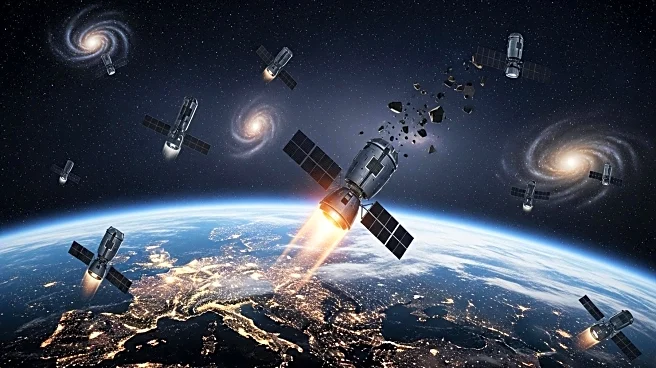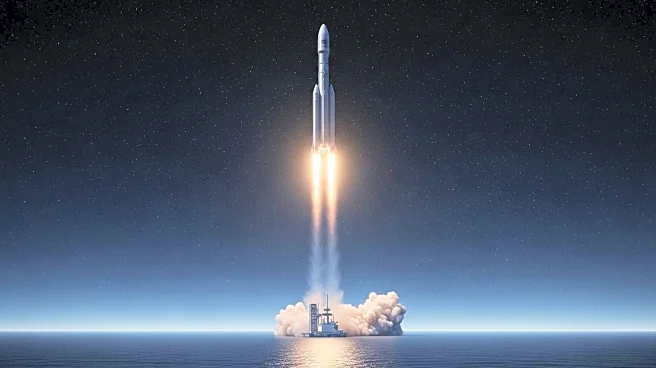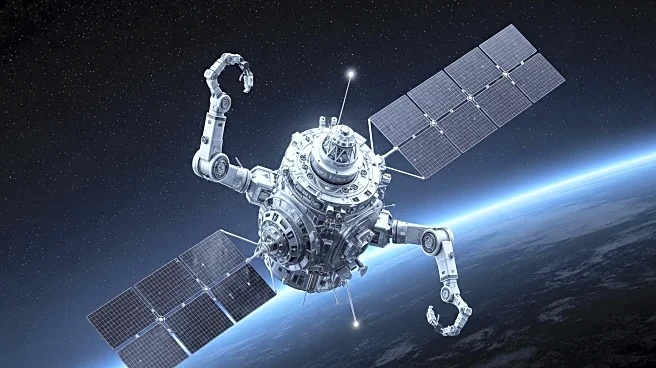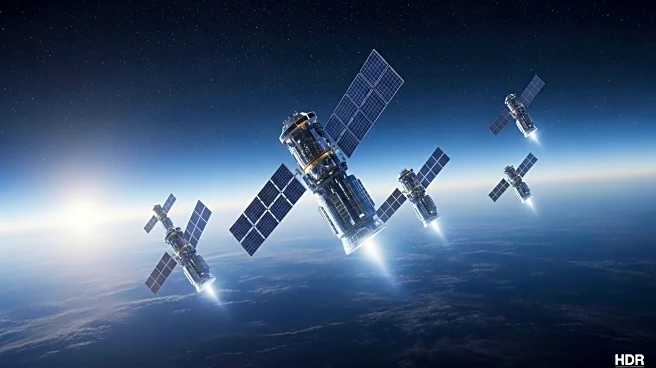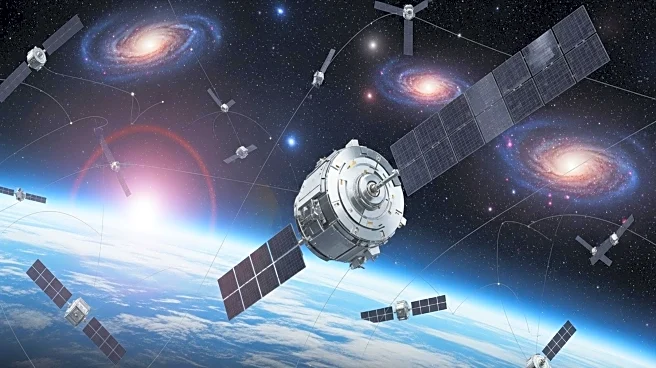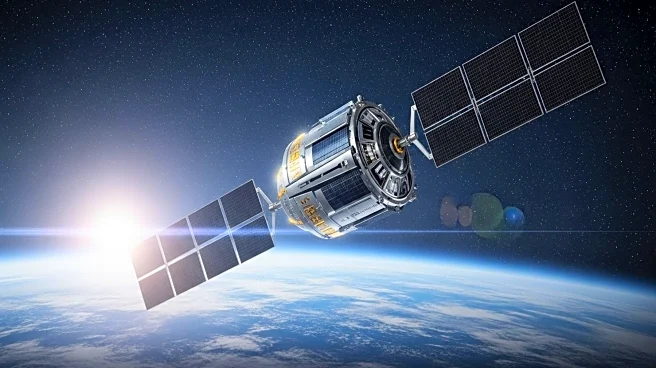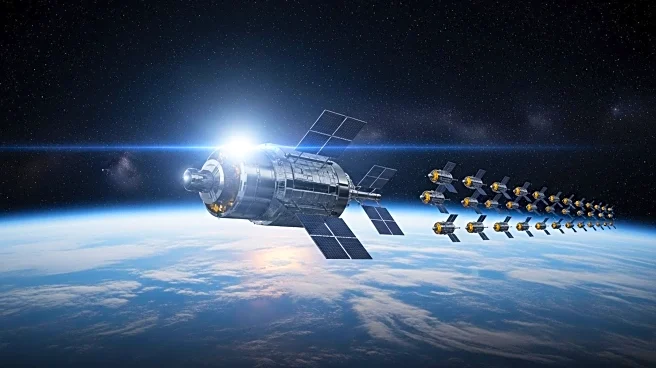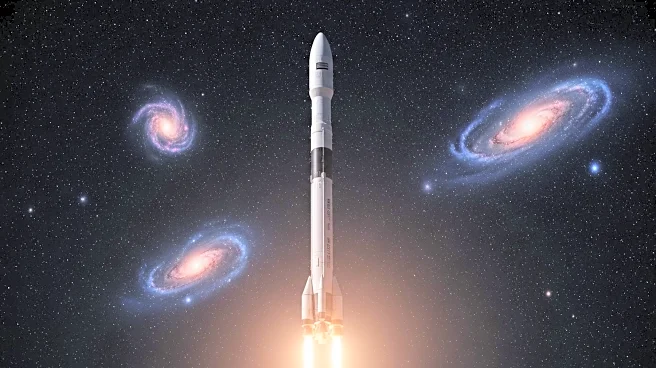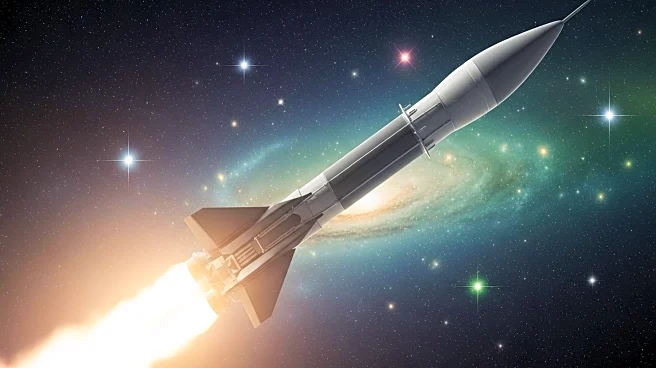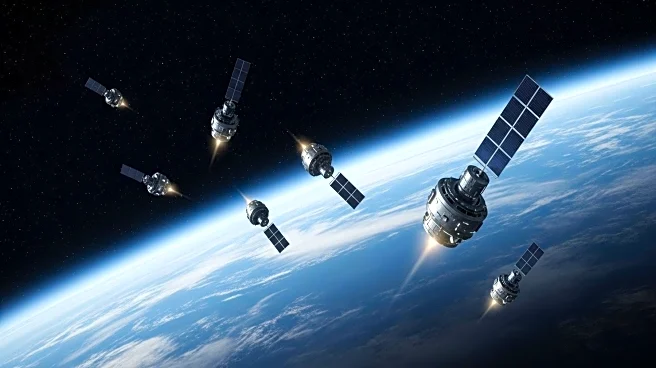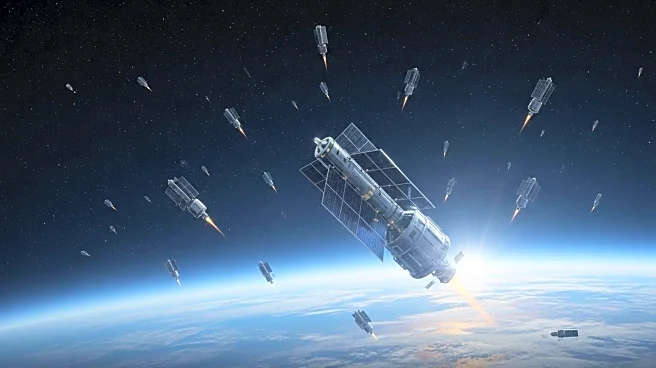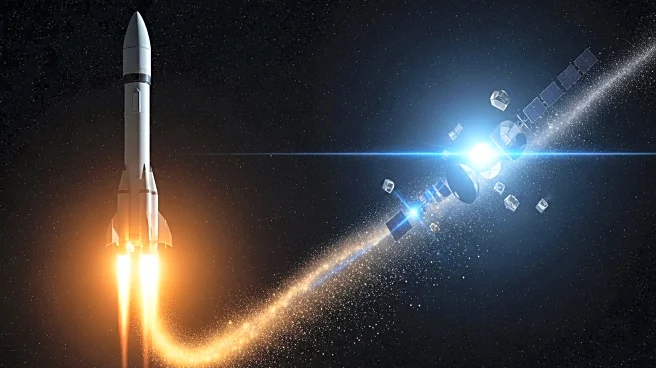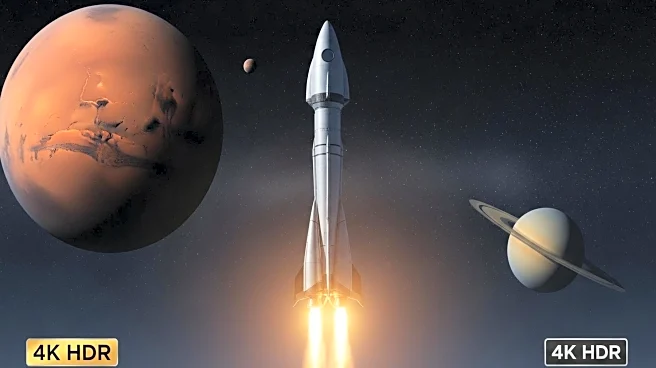What is the story about?
What's Happening?
SpaceX's Starlink satellites are experiencing frequent re-entries into Earth's atmosphere, contributing to growing concerns about space debris. According to Smithsonian astrophysicist Jonathan McDowell, one or two Starlink satellites fall back to Earth daily, a figure expected to rise. These satellites, launched by SpaceX since 2019, have a lifespan of about five years before they are guided to burn up upon re-entry. However, the increasing number of satellites in Low Earth Orbit, including those from competitors like Amazon, is leading to more satellite casualties. The Federal Aviation Administration has warned that by 2035, up to 28,000 fragments from Starlink satellites could survive re-entry annually, increasing the risk of space debris causing harm on the ground.
Why It's Important?
The frequent re-entry of Starlink satellites highlights the growing issue of space debris, which poses risks to both the environment and human safety. The release of metals into the stratosphere from burning satellites could potentially harm the ozone layer, according to scientists. Additionally, the increasing number of satellite fragments surviving re-entry raises the probability of them causing damage or injury on Earth. This situation underscores the need for effective space debris management and regulation as satellite constellations continue to expand, with potential implications for future space missions and the safety of people on the ground.
What's Next?
As the number of satellites in orbit continues to grow, stakeholders may need to consider stricter regulations and innovative solutions to manage space debris. The potential for a Kessler syndrome, where collisions between satellites create a cascade of debris, could necessitate international cooperation to prevent such scenarios. SpaceX's dominance in Low Earth Orbit may push competitors to higher orbits, increasing the longevity of debris. Additionally, the impact of solar storms on satellite re-entries could prompt further research and preparedness measures. The space industry and regulatory bodies may need to address these challenges to ensure sustainable satellite operations.
Beyond the Headlines
The ethical and environmental implications of space debris are significant. The potential damage to the ozone layer and the risk of debris causing harm on Earth raise questions about the responsibility of satellite operators. As the space industry grows, balancing technological advancement with environmental stewardship becomes crucial. The long-term impact of space debris on future generations and the sustainability of space exploration are considerations that may drive policy changes and innovation in satellite design and deployment.
AI Generated Content
Do you find this article useful?
